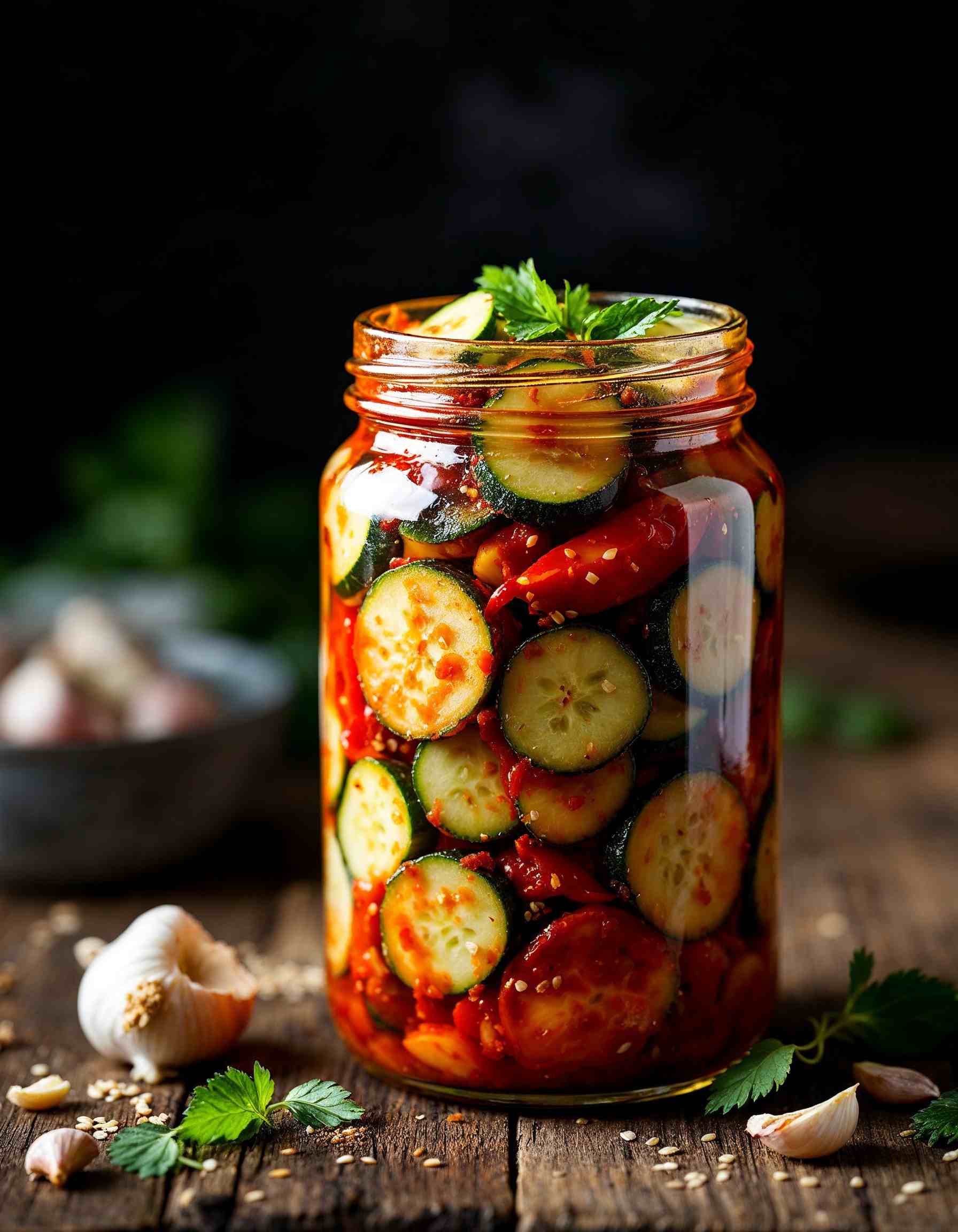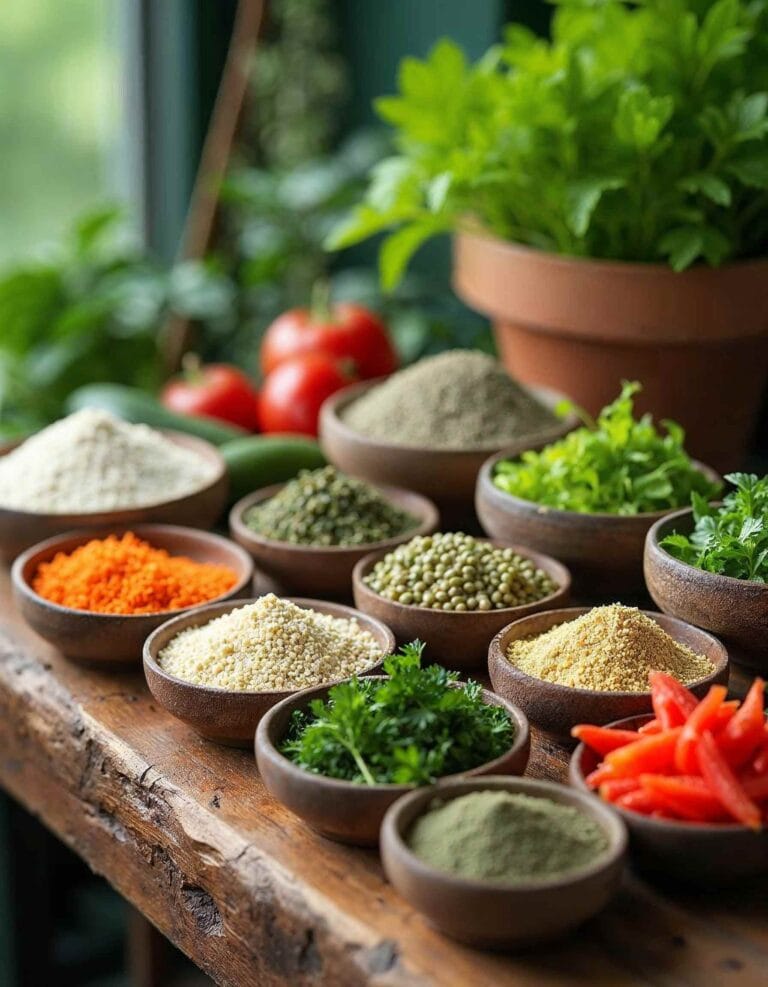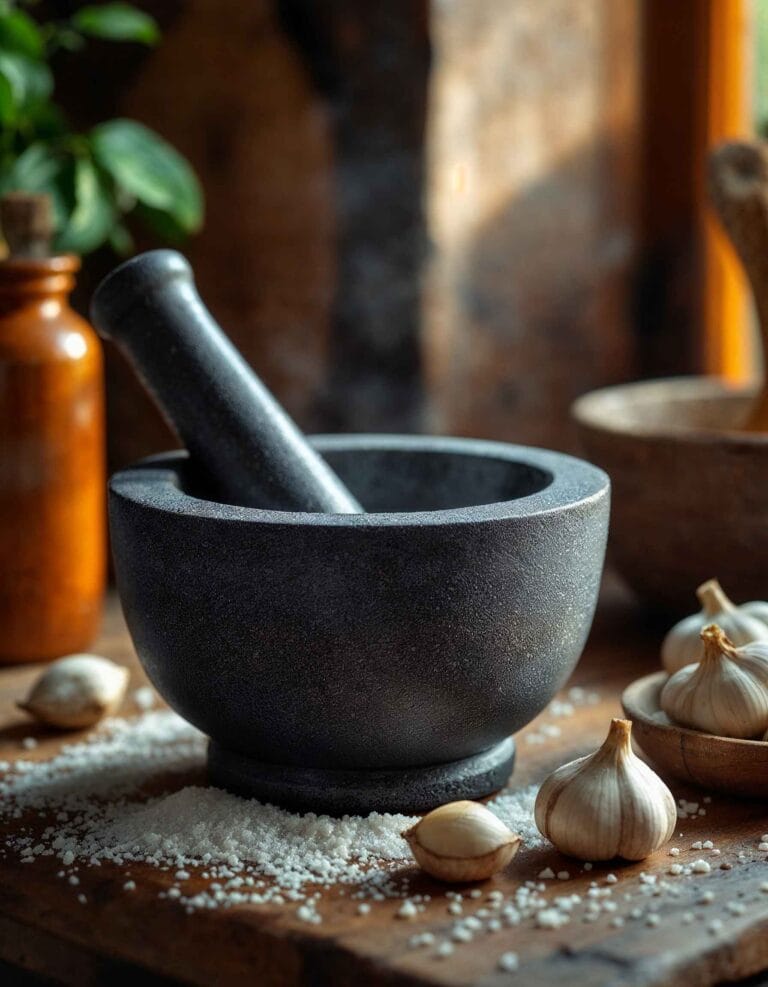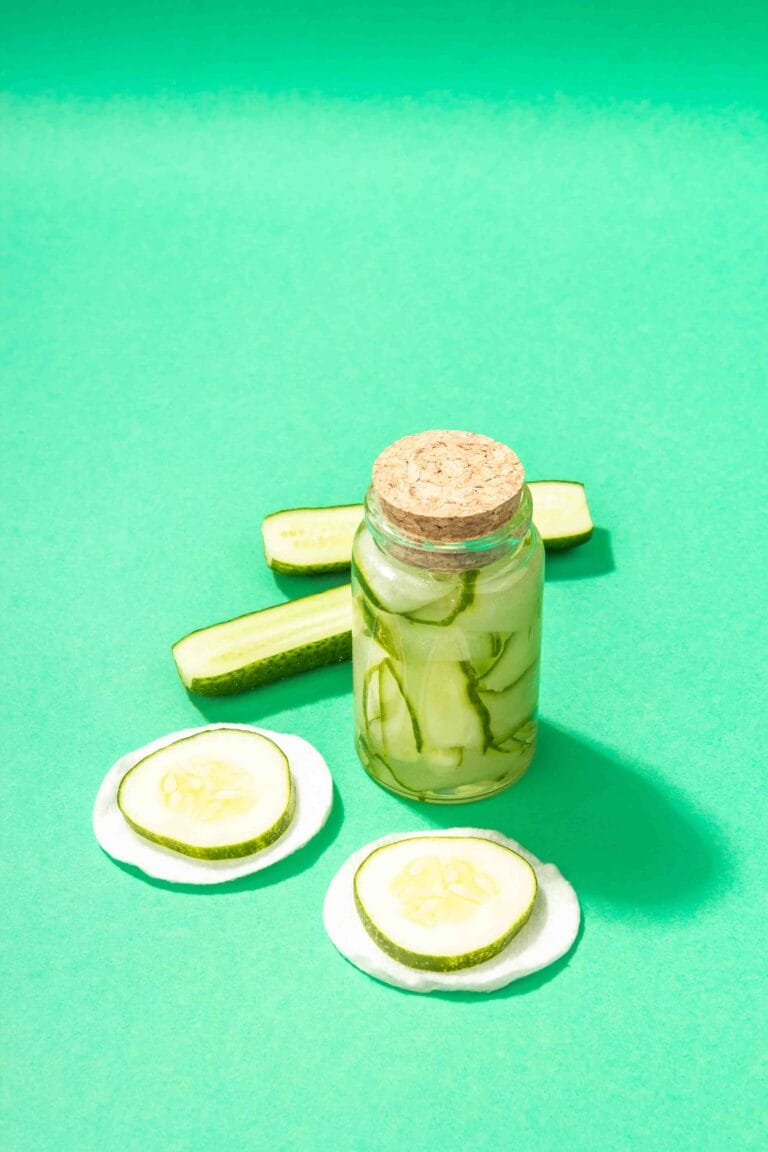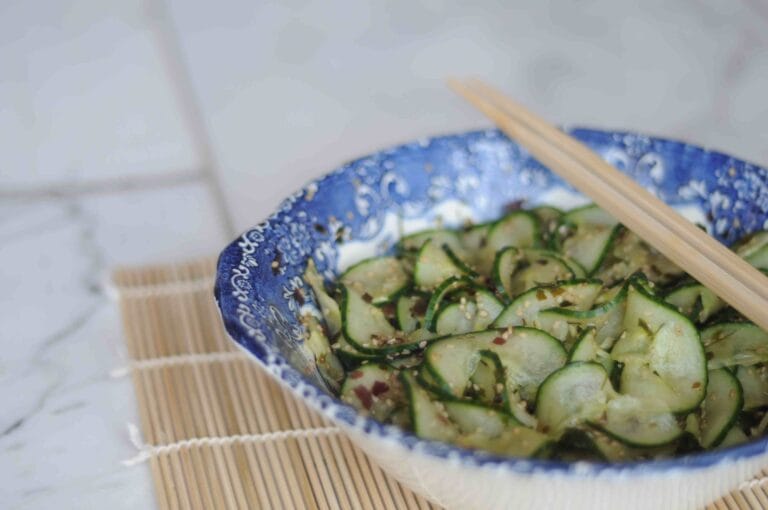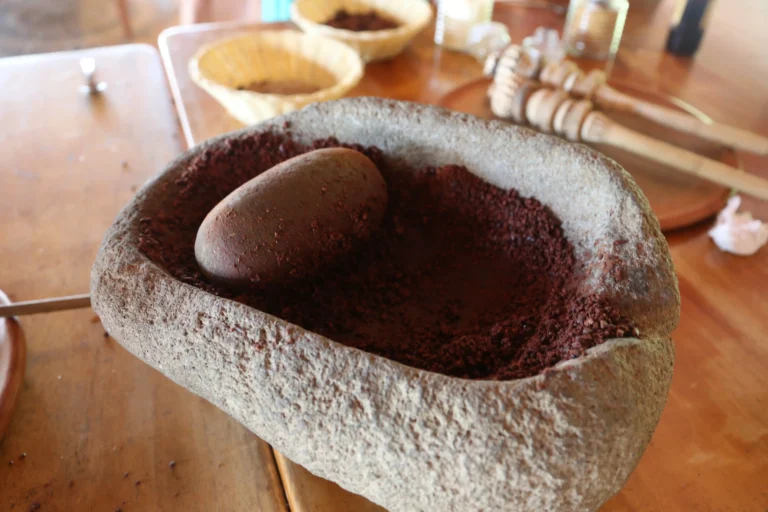How Long Does Cucumber Kimchi Last? Expert Tips for Freshness and Storage
How long is cucumber kimchi good for reddit users often wonder, especially given its delicate texture and higher water content. Cucumber kimchi, or “oi kimchi” in Korean, is a vibrant, crunchy, and refreshing variation of traditional kimchi. Unlike napa cabbage or radish kimchi, cucumber kimchi offers a light and crisp bite, making it a popular choice during warm seasons or as a complement to spicy dishes.
Due to its faster fermentation and shorter shelf life, proper storage and handling are crucial to keeping cucumber kimchi fresh and safe to eat. In this article, we’ll dive into how long cucumber kimchi typically lasts, the best storage practices, and how to identify when it’s no longer good to consume.
Follow this easy guide to prepare a refreshing and flavorful cucumber kimchi at home.
Understanding Kimchi Storage
Kimchi, a staple of Korean cuisine, is renowned for its ability to develop complex flavors through fermentation. However, not all kimchi types age the same way. Cucumber kimchi, in particular, requires special attention due to its unique characteristics.
Why Does Cucumber Kimchi Have a Shorter Shelf Life?
Cucumber kimchi is made with fresh cucumbers, which are naturally high in water content. This moisture speeds up the fermentation process, causing the kimchi to ripen and sour more quickly than cabbage or radish-based kimchi. Additionally, the crispness of cucumbers diminishes over time, affecting the overall texture and taste.
Key Factors That Affect Freshness
- Ingredients Used:
- Fresh cucumbers and spices lead to better quality and longevity.
- The absence of preservatives in homemade versions shortens the shelf life.
- Fermentation Stage:
- Early fermentation (1–3 days): The kimchi is mild and fresh.
- Fully fermented (5–7 days): The flavors are bold, but the cucumbers may soften.
- Storage Conditions:
- Kimchi stored in the refrigerator at 1–4°C (33–39°F) lasts longer.
- Warmer environments accelerate fermentation and spoilage.
- Exposure to Air:
- Using non-airtight containers or failing to fully submerge the cucumbers in brine can lead to spoilage.
Learn about the ideal fermentation time for cucumber kimchi to achieve its best taste and texture.
Shelf Life of Cucumber Kimchi
For optimal taste and safety, cucumber kimchi is best consumed within 2 to 3 weeks when stored properly in the refrigerator. However, this time frame can vary:
- Homemade Cucumber Kimchi: Lacks preservatives and lasts about 1–2 weeks before the texture and flavor change significantly.
- Store-Bought Cucumber Kimchi: May contain preservatives, allowing it to stay fresh for up to 3–4 weeks if unopened. Once opened, consume within 1–2 weeks.
Signs of Spoilage
Knowing when cucumber kimchi has gone bad is crucial for avoiding unpleasant or unsafe dining experiences. While some changes are part of the natural fermentation process, others signal spoilage and the need to discard the kimchi.
Visual Indicators of Spoilage
- Discoloration:
- Fresh cucumber kimchi retains its vibrant green and red hues. If the cucumbers appear gray, black, or moldy, it’s time to discard the batch.
- Excess Sliminess:
- While kimchi can develop a slight slimy texture during fermentation, excessive sliminess is a clear sign of spoilage.
- Presence of Mold:
- Mold can appear as white, blue, or green fuzzy spots on the surface. Even if mold seems limited to one area, it’s safest to discard the entire batch.
Changes in Smell and Taste
- Overly Sour Odor:
- Fermented kimchi has a tangy, spicy aroma. A sharp, unpleasantly sour or rancid smell indicates that the kimchi has gone bad.
- Off-Tasting:
- Spoiled kimchi often tastes overly acidic or has an unexpected bitterness, making it unappetizing.
Texture and Firmness
- Mushy Cucumbers:
- The hallmark of fresh cucumber kimchi is its crisp texture. As the cucumbers break down during fermentation, they may become limp or soggy. If they feel excessively mushy or fall apart when handled, the kimchi is likely past its prime.
- Unusual Separation of Liquids:
- A natural brine forms during fermentation, but excessive liquid separation or an oily layer on top may signal spoilage.
What to Do If You Suspect Spoilage
If you notice any of these signs, it’s best not to take a risk. Consuming spoiled kimchi can lead to foodborne illnesses. Discard any kimchi that appears or smells off, and ensure proper storage practices for future batches.
Complement your cucumber kimchi with these iconic Korean banchan for a well-rounded meal.
Tips for Extending Shelf Life
Proper handling and storage can significantly extend the shelf life of cucumber kimchi while preserving its flavor and texture. Here are practical tips to help keep your kimchi fresh longer.
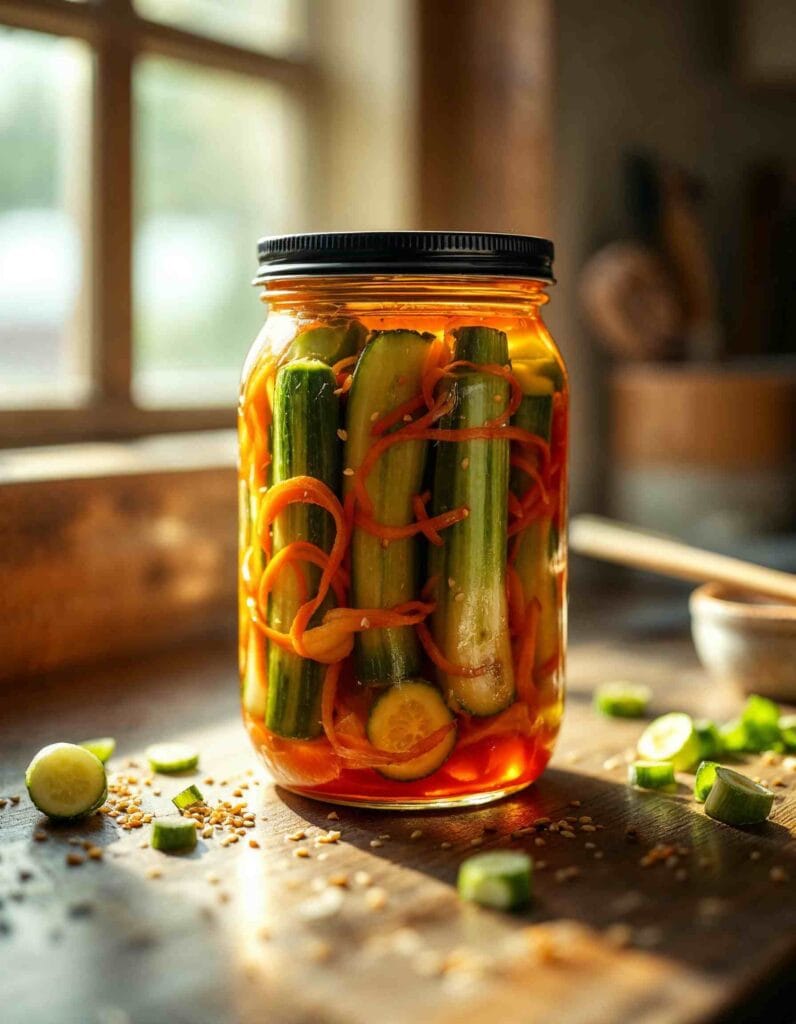
Start with Quality Ingredients
- Fresh Cucumbers:
- Use firm, blemish-free cucumbers to ensure the best starting point for your kimchi. Softer or overripe cucumbers will spoil faster.
- High-Quality Spices and Seasonings:
- Fresh garlic, ginger, chili powder, and other seasonings not only enhance flavor but also support proper fermentation.
Store in an Airtight Container
- Prevent Air Exposure:
- Oxygen encourages spoilage and mold growth. Use airtight jars or containers to create an anaerobic environment for fermentation.
- Choose the Right Size Container:
- Avoid large containers with too much empty space. Smaller containers minimize air pockets and help maintain freshness.
Maintain Proper Submersion
- Keep Cucumbers Fully Submerged:
- The brine acts as a protective barrier against harmful bacteria. Use a weight or press to ensure all cucumbers stay submerged.
- Adjust Brine Levels:
- If the brine evaporates or isn’t sufficient, top it up with a saltwater solution (1 tablespoon of salt dissolved in 1 cup of water).
Store at the Right Temperature
- Refrigeration Is Key:
- Store cucumber kimchi in the refrigerator at a consistent temperature of 1–4°C (33–39°F). This slows down the fermentation process and keeps it fresh longer.
- Avoid Freezing:
- Freezing cucumber kimchi damages its texture, making the cucumbers soggy and unappetizing.
Use Clean Utensils
- Avoid Cross-Contamination:
- Always use clean spoons or chopsticks to scoop out kimchi. Never use fingers or utensils that may introduce bacteria.
- Portion for Convenience:
- Divide large batches into smaller containers to reduce repeated exposure to air when opening and closing the jar.
Fermentation Timing
- Monitor Fermentation:
- For milder flavors, consume cucumber kimchi within the first week of refrigeration.
- For tangier tastes, allow it to ferment for a couple of weeks.
- Taste Test Regularly:
- Check the flavor and texture periodically to determine your preferred fermentation stage.
Bonus Tips for Homemade Cucumber Kimchi
- Add Natural Preservatives:
- Include ingredients like garlic, ginger, or chili powder, which naturally deter harmful bacteria.
- Experiment with Small Batches:
- Since cucumber kimchi has a short shelf life, making smaller quantities reduces waste and ensures freshness.
How Fermentation Affects Flavor
Fermentation is the heart of what makes kimchi so flavorful, and understanding how it changes over time can help you enjoy cucumber kimchi at its peak. From its initial crisp and refreshing stage to its tangy and complex maturity, each phase offers a unique taste experience.
The Stages of Fermentation
- Fresh and Mild (Day 1–3):
- During the early stages, cucumber kimchi tastes light, crisp, and mildly spicy. The natural sweetness of cucumbers dominates, and the brine may still be slightly salty. This is the perfect stage for those who prefer less tangy kimchi.
- Well-Fermented (Day 4–7):
- The fermentation process intensifies, and beneficial lactic acid bacteria begin to thrive. The kimchi develops a balanced sourness, blending with the spice and umami flavors from garlic and chili powder.
- Fully Ripened (Day 8 and Beyond):
- By this stage, the tanginess is pronounced, and the cucumbers may start softening. This ripe kimchi works wonderfully as an ingredient in dishes like stews or pancakes but may not appeal to those seeking a fresh taste.
How Texture Evolves
- Early Stage:
- The cucumbers retain their crunch and firmness, offering a satisfying bite.
- Later Stage:
- As fermentation progresses, the cucumbers soften as their cell walls break down. While this texture is preferred in some cuisines, it might feel unappealing if you enjoy crunchy kimchi.
Balancing Acidity and Sweetness
- The Role of Acidity:
- Acidity increases with fermentation as sugars in the cucumbers and spices are converted into lactic acid. This gives kimchi its signature tang.
- The Sweetness Factor:
- Fresh cucumber kimchi maintains a subtle sweetness from natural sugars, but this diminishes over time as fermentation advances.
Fermentation and Health Benefits
- Probiotic Growth:
- The lactic acid bacteria that develop during fermentation are excellent for gut health, aiding digestion and boosting immunity.
- Nutrient Retention:
- Despite fermentation, cucumber kimchi retains key nutrients like vitamins A and C. These nutrients, combined with probiotics, make cucumber kimchi a powerhouse addition to your diet.
Best Ways to Enjoy Fermented Kimchi
- Fresh and Early Stage:
- Pair with grilled meats or rice dishes for a refreshing bite.
- Use as a topping for noodle soups or salads.
- Ripe and Fully Fermented:
- Add to stews like kimchi jjigae for a tangy flavor boost.
- Incorporate into fried rice or kimchi pancakes.
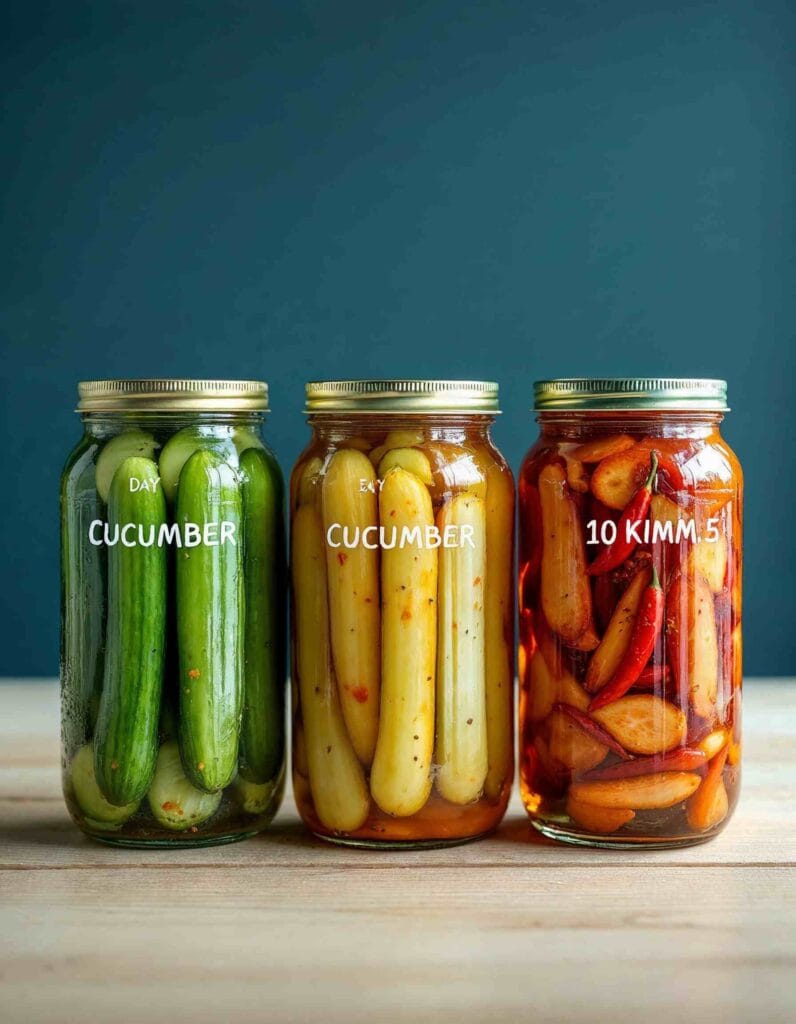
Homemade vs. Store-Bought Cucumber Kimchi
The shelf life and quality of cucumber kimchi can vary depending on whether it’s homemade or store-bought. Each has its benefits and considerations:
Homemade Cucumber Kimchi
- Pros:
- Fresh ingredients ensure better taste and texture.
- No preservatives or additives.
- Customizable spice levels and flavor profiles.
- Cons:
- Shorter shelf life due to the lack of preservatives.
- Requires careful monitoring and storage to prevent spoilage.
Store-Bought Cucumber Kimchi
- Pros:
- Often includes preservatives, extending shelf life.
- Convenient and ready-to-eat packaging.
- Consistent quality and taste for mass-produced products.
- Cons:
- May contain additives that some prefer to avoid.
- Less fresh compared to homemade versions.
- Limited customization of flavors.
FAQs
How long can cucumber kimchi last?
Cucumber kimchi typically lasts 2 to 3 weeks when stored properly in the refrigerator at 1–4°C (33–39°F). The exact duration depends on factors like the freshness of the cucumbers, the stage of fermentation, and the storage conditions.
- Homemade versions may spoil faster due to the absence of preservatives.
- Over time, the kimchi will continue to ferment, becoming tangier and softer. While it may still be safe to eat beyond three weeks, the texture and flavor may not be as desirable.
How long can kimchi last in the fridge?
The shelf life of kimchi varies by type:
- Traditional Cabbage or Radish Kimchi:
- Can last several months to a year in the fridge, especially in sealed containers.
- The flavor intensifies with prolonged fermentation, making it great for stews or cooking.
- Cucumber Kimchi:
- Due to its high water content, it has a much shorter shelf life of about 2 to 3 weeks.
To extend the lifespan, ensure the kimchi is stored in an airtight container and fully submerged in its brine.
Can you eat cucumber kimchi right away?
Yes, cucumber kimchi can be enjoyed immediately after preparation.
- Freshly Made (Day 1): Offers a crisp, refreshing taste with a hint of spice. This is ideal for those who prefer mild flavors.
- Lightly Fermented (Day 2–3): The kimchi develops a slightly tangy flavor as fermentation begins.
- Eating cucumber kimchi right away gives you a taste of its fresh ingredients before fermentation alters the flavor and texture.
How long can Korean cucumber salad last in the fridge?
Korean cucumber salad, often called “Oi Muchim,” is a quick, non-fermented dish distinct from cucumber kimchi. It typically lasts 2 to 3 days in the refrigerator when stored in an airtight container.
- Unlike cucumber kimchi, it lacks the fermentation process that helps preserve the dish.
- For best results, consume it while the cucumbers are still crisp and fresh.
Conclusion
Cucumber kimchi is a delicious and refreshing variation of traditional kimchi, beloved for its crisp texture and tangy, spicy flavors. However, its high water content means it has a shorter shelf life compared to other types of kimchi. When stored in an airtight container and kept in the refrigerator, cucumber kimchi can remain fresh for 2 to 3 weeks, depending on its preparation and storage methods.
By monitoring the fermentation process and practicing proper storage techniques—such as ensuring the cucumbers are submerged in brine and using clean utensils—you can enjoy the best flavors and textures cucumber kimchi has to offer. For those who love experimenting in the kitchen, homemade cucumber kimchi provides an opportunity to tailor the spice and seasoning levels to your preference.
Whether you enjoy it freshly made or fully fermented, cucumber kimchi is a versatile dish that complements countless meals and provides a healthy dose of probiotics, vitamins, and bold Korean flavors. By following the tips outlined in this guide, you can savor this vibrant dish at its peak freshness and avoid spoilage.

